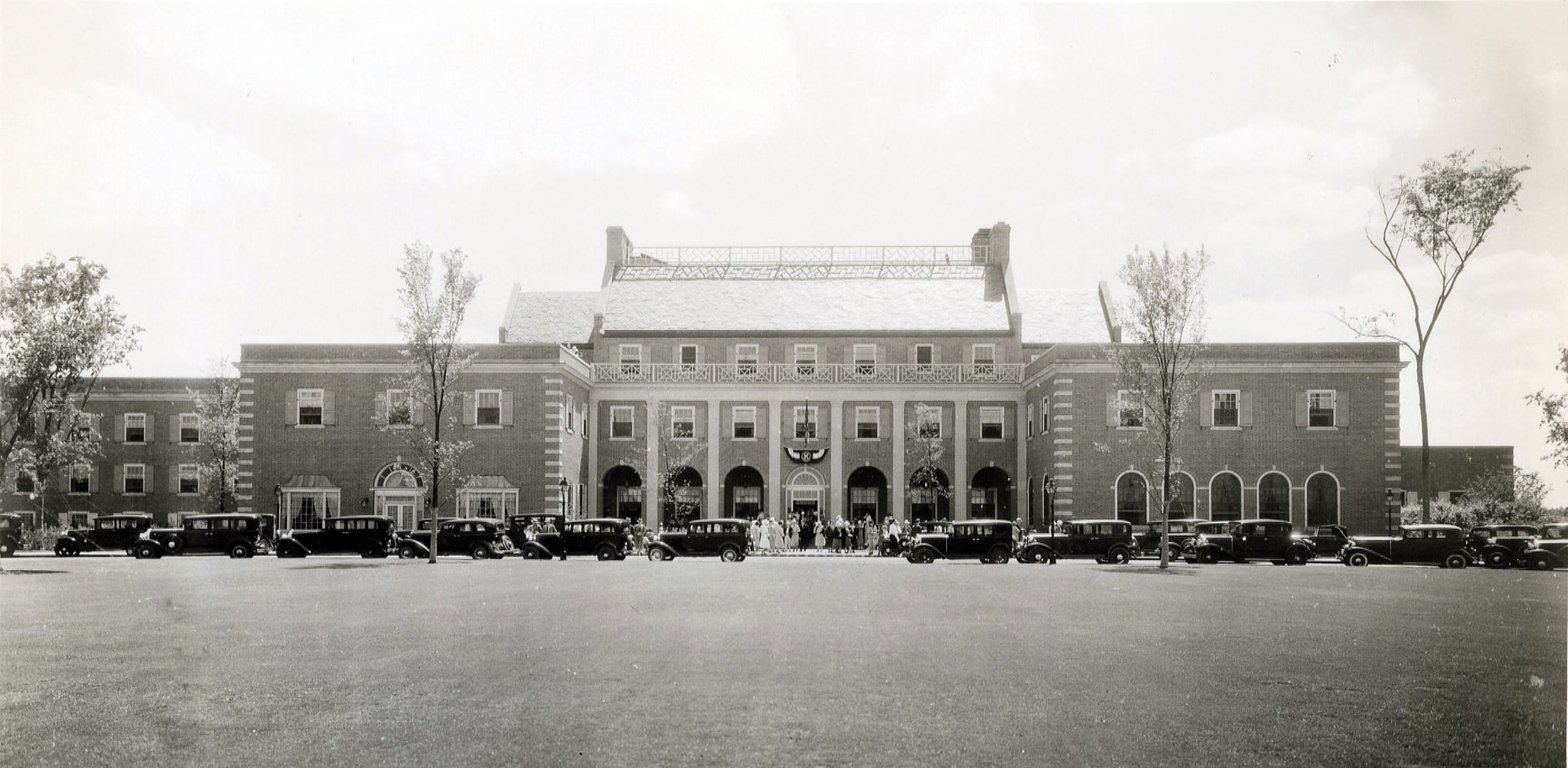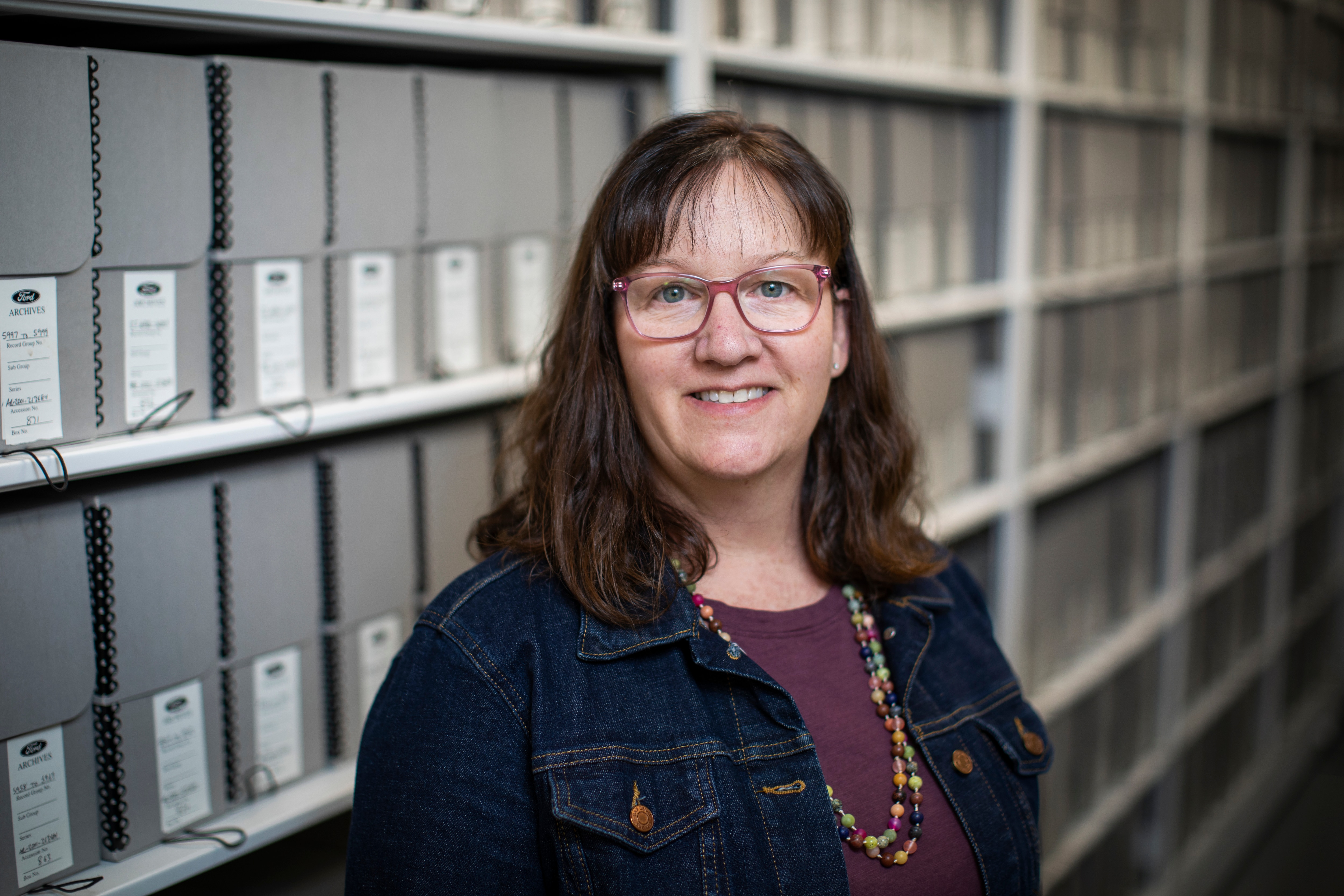After Henry Ford built the Ford Airport along Oakwood Boulevard in 1925, he recognized the need for a place to feed and house the many passengers and guests the airport brought to the area. The Dearborn Inn, designed by architect Albert Kahn, opened across the street from the Airport in 1931 and became one of the first airport hotels in the country. The L.G. Treadway Service Corporation was hired to manage the Inn after Henry Ford was impressed during his visit to one of L.G. Treadway’s New England inns. Room rates ranged from $3.50/night for a single room to $10/night for double occupancy.
The Inn, designed by Albert Kahn in the Georgian style of architecture, was originally a three-story main building with three additional two-story wings and a total of 108 guest rooms. For dining options, it boasted a coffee shop, a lounge, and a full-service dining room that offered views of the Ford Airport’s arriving and departing plane traffic. The 2,000 square foot lobby still retains its original, expansive checkerboard marble floor and large, green marble fireplace that welcomes famous guests, politicians, business travelers, and local families. For many years, Henry Ford and his wife, Clara, dined at the hotel every Sunday afternoon.
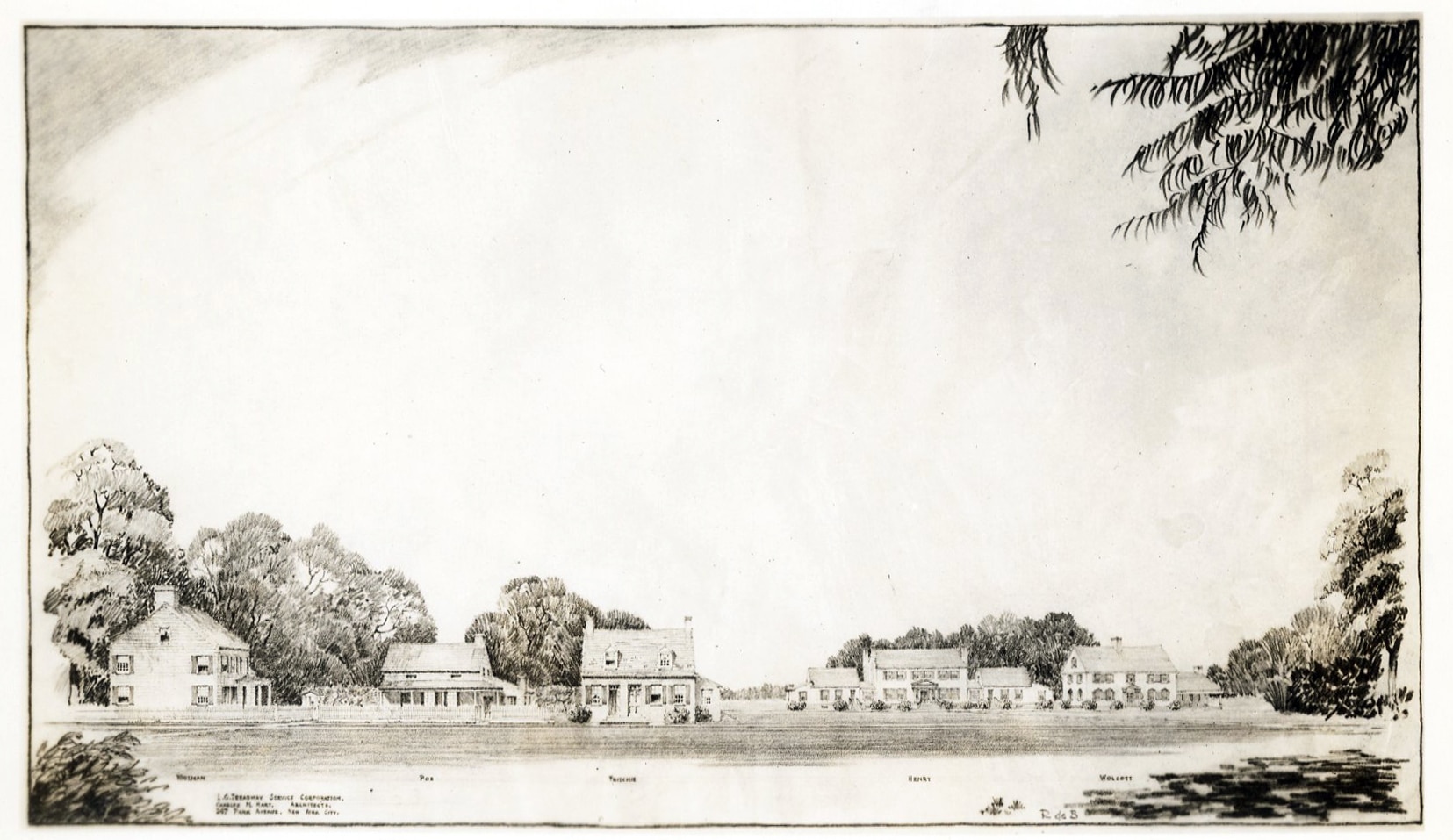
Also on the 23-acre property is a Colonial Village of five reproduction guest homes designed by architect Charles Hart. Built in 1937, the homes provided an additional 33 guest rooms. The buildings are replicas of the homes of Civil War unionist Barbara Fritchie, founding father Patrick Henry, writer and poet Edgar Allen Poe, poet and essayist Walt Whitman, and Treasury Secretary and Connecticut Governor Oliver Wolcott. The houses were intended to be the first of 35 Colonial Village replica homes, but World War II derailed those plans. An outdoor heated pool, which guests could enjoy seasonally, was also added in 1937. Other outdoor recreation included a putting green, tennis courts, shuffleboard, and a playground for the youngest guests.
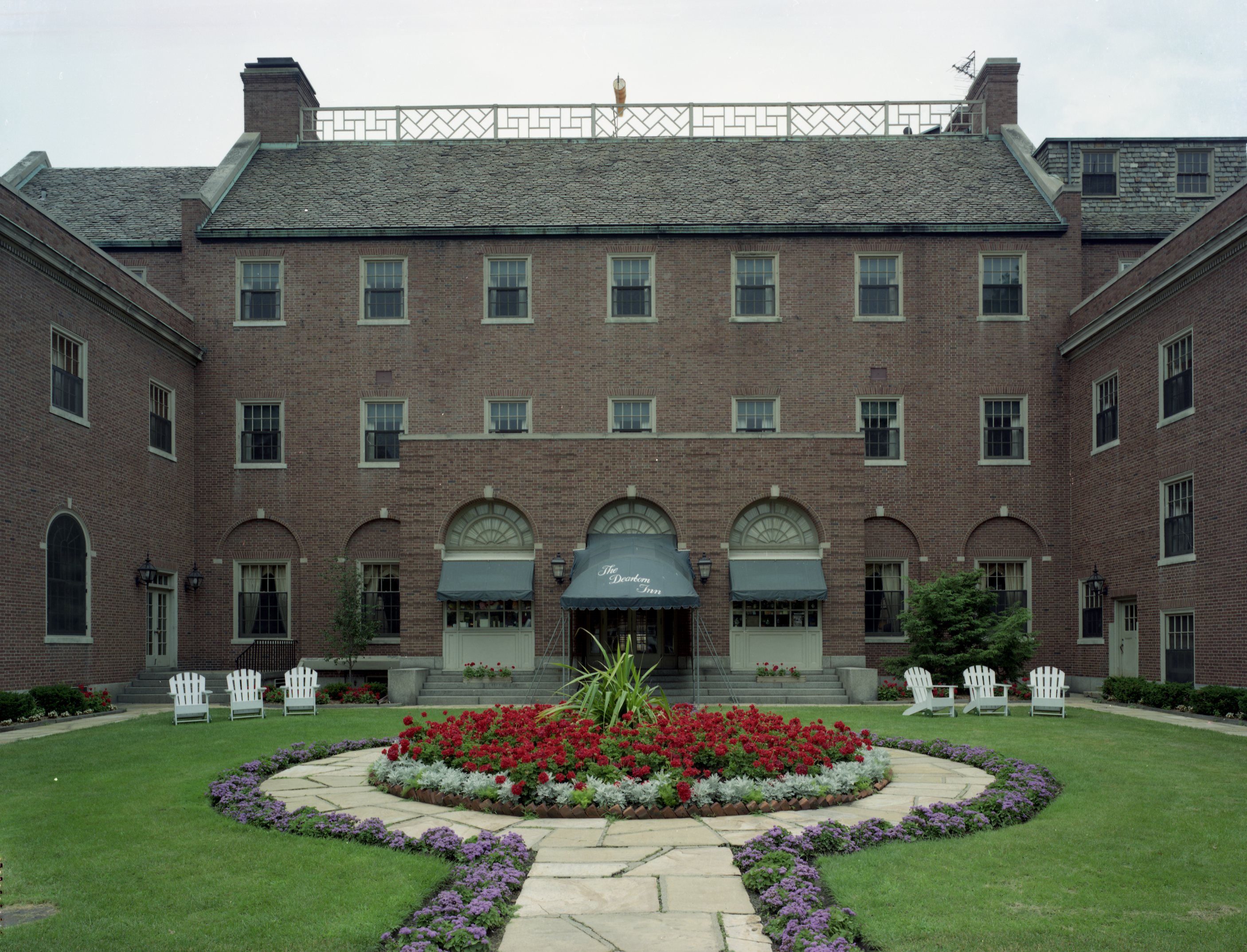
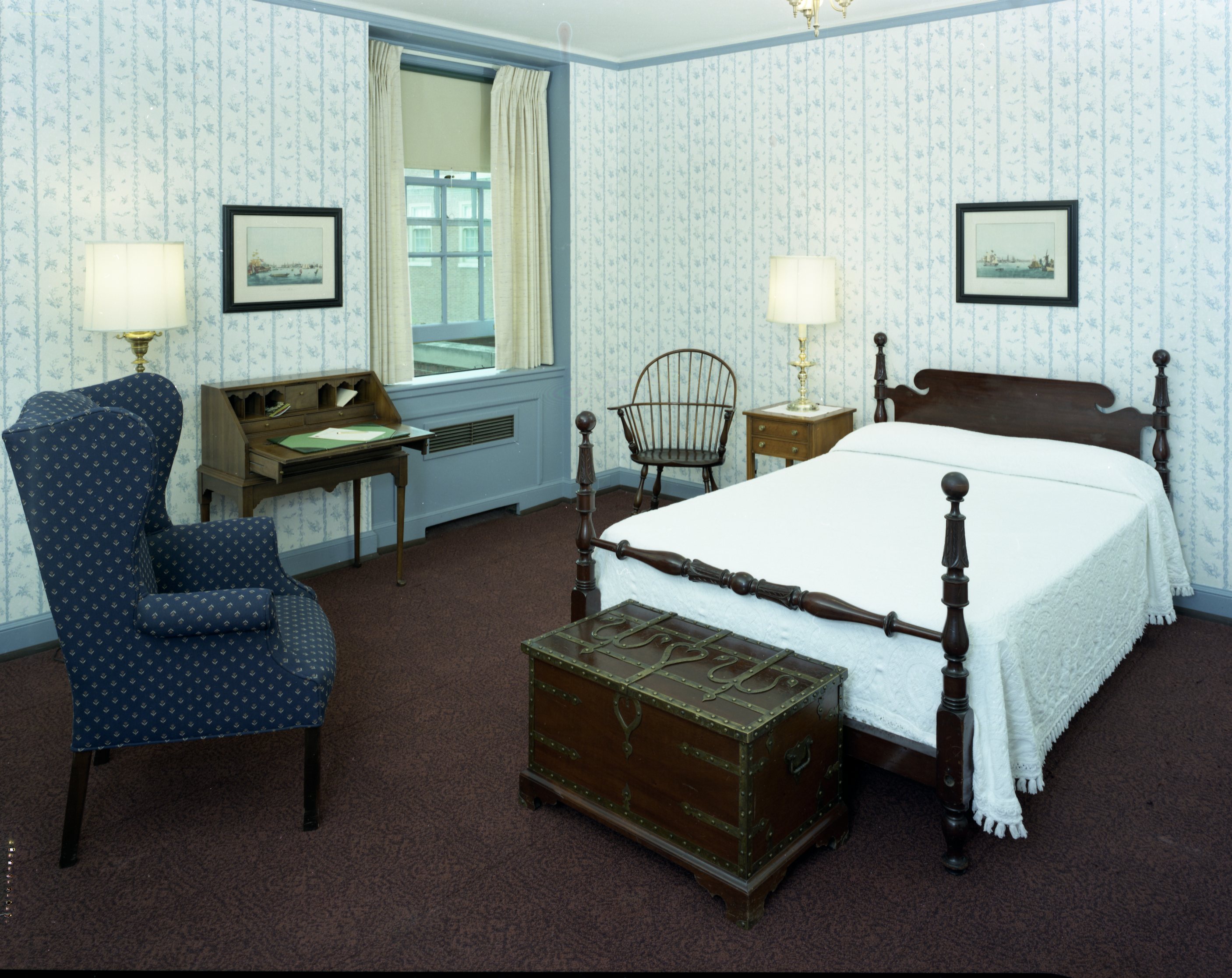
Over the years, the property has undergone many additions and updates. A dormitory was built near the Inn in 1933, to give employees a place to stay on the grounds. In 1937, the Inn became the first hotel to feature air conditioning in its guest rooms. It also began serving alcohol and allowing tobacco use in 1949, two years after the death of Henry Ford, who had banned both from the hotel. A gift shop was added to allow guests to purchase souvenirs, including reproduction Americana trinkets, cookbooks, and other items. In 1960, the Inn required additional guest rooms and added two Motor Lodges, the McGuffey and Burbank buildings, with 54 suites and rooms. The Inn added an industry-first, direct-dial telephone system in the early 1960s, to allow guests to receive phone calls directly in their rooms.
The Dearborn Inn was added to the National Register of Historic Places in 1982, with a historical marker placed at the front of the property. In late 1987, the Inn closed for a year-long renovation project, that included overhauls of the two dining rooms and the addition of a 20,000 square-foot wing with 66 new guest rooms and a second ballroom to host large meetings and events. In 2023, the Inn underwent another major renovation project encompassing 290,000 square feet of guest rooms, public spaces, replica homes, roofs, brickwork, and infrastructure throughout. Guest rooms have been completely rebuilt, including all new windows, to improve layout and accessibility. Where possible, historic elements were preserved, such as the original iconic black and white marble floor and ornate wall clock in the lobby. These most recent renovations will both protect the hotel and provide a better guest experience for many years to come.
Leslie Armbruster is an archives manager at Ford.
